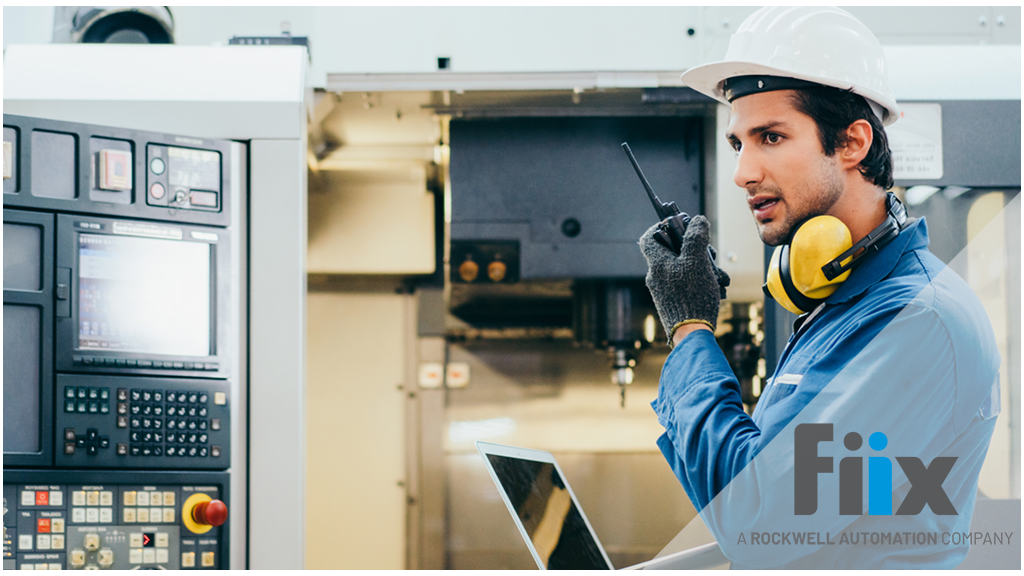7 CMMS Features That Solve 90% of your Maintenance Problems

Think of the challenges your maintenance team faces every day—breakdowns, backlog, missing parts, cost overruns—the list goes on. Luckily, CMMS software offers a helping hand in eliminating these headaches. The best part is, you don’t have to learn how to use dozens of tools just to do it. That’s because seven CMMS features alone can solve 90% of maintenance problems by targeting them at their root.
7 CMMS features and the problems they help you eliminate

Work order Builder
What is it?
CMMS software allows you to build, assign, complete, and document digital work orders and work requests with a few tools:- Work request portal: Allows staff outside of maintenance to create and track maintenance work requests using customized request forms
- Asset hierarchy: Search for assets or asset groups and associate a work order with them
- Instructions and documents: Add task lists, manuals, photos, and more to work orders
- Parts and safety equipment: List all spare parts and safety equipment needed for a job
- Failure codes: Outline a problem, cause, and action for asset failure
- Logistical information: Set a deadline, choose a priority level, and assign a technician
- Notes: Include additional details, like the sound a machine made before breaking down
- Tracking: See the status of work, monitor costs, and file away closed work orders.
The problems it solves
A digital work order builder helps you tear down three huge obstacles for your maintenance team:- Downtime: This tool makes the work order process easier and faster than with pen and paper or Excel. The quicker a work order is created, assigned, and completed, the less time an asset is down. Machines can get running in less time and stay healthy longer.
- Inefficiency: This feature allows staff to document, submit, and see requests instantly without writing it down twice or sift through paper files. Technicians can access the resources to get the job done fast, correctly, and safely without wasting time looking for what they need.
- Lack of information: The work order builder ensures every detail for a task is available with a few clicks. This leads to standard results, easier troubleshooting, and smarter decision-making so you can maximize asset health whenever possible.
Scheduled maintenance planner
What is it?
This CMMS tool removes the challenges of scheduling maintenance, thanks to features like:- PM triggers: trigger work for scheduled tasks based on time, use, condition, or events
- Calendar: see everyone's schedule and assign tasks depending on workload
- Maintenance forecaster: match upcoming tasks with inventory purchases and work schedules
- Inspection checklist: attach a list of inspection tasks, including pass or fail guidelines
- Scheduled maintenance metrics: see metrics such as planned maintenance compliance
- All elements of the work order builder: add all information available for a work order to a scheduled maintenance task
The problem it solves
The scheduled maintenance planner shields your organization from three big issues:
Relying on reactive maintenance: The biggest advantage of this feature is it can help you establish a preventative maintenance program and reduce the number of fires your team puts out every day, improving everything from safety to production.
Doing too much preventive maintenance: Yes, there is such a thing as too much preventative maintenance. The scheduled maintenance planner helps you find the best frequency for tasks so equipment and staff are never overworked.
Overspending: The planner tool gives you a view into every part needed for scheduled maintenance so you never order too many parts, schedule too many people, overpay on rush shipping, or lose sight of how your department is performing. Every dollar is optimized.
Asset profiles
What is it?
Digital asset profiles help you know your assets inside and out so you can avoid your biggest problems:
- Asset hierarchy and location: organize assets and know exactly where everything is
- Repair history: see an asset's past problems, how they were handled, and by who
- Asset category: group assets in categories and associate them with actions and reports
- Documents and notes: attach a bill of materials, manuals, diagrams, safety notes, and more assets
- Financial tracking: see how much has been spent on labor and parts for each asset
- Online/offline status: set the status of an asset and track availability, MTTR, and MTBF
- Vendor information: add warranty and vendor contact information to an asset
The problems it solves
Digital asset profiles give your team all the information they need to overcome some common obstacles.Demanding audits: Audits usually require very specific information about assets and their maintenance history. Digital asset profiles give you the ability to search for assets, find that information, and prepare for audits in no time.
Building accurate budgets: Digital asset profiles contain all the details to calculate how much maintenance costs for each piece of equipment and make informed choices about capital expenditure forecasting, repair or replace decisions, and more.
Inefficient PMs: It’s hard to see the value of preventive maintenance if it’s inefficient. This tool helps technicians avoid having to collect all the information about a task before they start, making it easier for them to complete scheduled maintenance quickly and safely.
Maintenance dashboard
What is it?
The central CMMS dashboard gives you a 360-degree view of your maintenance operation with a few simple tools:- KPIs and metrics: View important metrics in one place and sort by facility
- Work order and backlog status: see the status of current, upcoming, and overdue work
- Customized view: put the information you need most at the top of the dashboard
- Real-time data sync: get an up-to-the-minute look at your maintenance operation
- Sharing: Create and share dashboard templates across teams to be on the same page
The problem it solves
Having your finger on the pulse of maintenance helps you smooth over some big potholes your team can get stuck in:
Overwhelming backlog: Maintenance backlog will always exist, but it can quickly get out of hand if not monitored carefully. A CMMS dashboard allows you to see what tasks are overdue in seconds so you can make a plan of attack and keep backlog manageable.
Miscommunication: It’s hard to make decisions, delegate work, and fine-tune maintenance schedules when you don’t have access to up-to-date information. Not only does the dashboard give you live insights into your maintenance operations, a shared dashboard ensures your whole team is looking at the same important metrics, so you and your team will never be out of the loop again.
Poor asset health: Having key metrics front and center makes it easy to analyze your team’s performance, identify areas that need improvement, and make changes that increase asset health based on what is best for each machine.
Inventory Control
What is it?
This CMMS feature allows maintenance teams to manage everything to do with inventory:
- Parts monitoring: Know what you have, where it is, and how much it costs
- Low stock alerts: Set minimum quantities and automatic reordering for critical parts
- First-in, first-out tracking: Use and budget for parts based on date of purchase
- Multi-site organization: See and share all spare parts across multiple facilities
- Work-associated parts: Add recommended parts to work orders and PMs
- Purchasing: Create, send, and record digital purchase orders and RFQs
The problem it solves
Solid inventory management can clear up some huge headaches for your maintenance team:
Disconnected maintenance: The maintenance team isn’t the only one relying on accurate inventory numbers. A CMMS makes it possible to sync this data with financial software, like an ERP, so maintenance costs are always reflected in company financials.
High costs: Spare parts can be expensive, especially if inefficiencies hamper the purchasing process. This tool eliminates these inefficiencies and cuts costs by forecasting inventory needs and establishing just-in-time delivery.
Hard to find or missing inventory: Inaccessible inventory is a big cause of downtime, which is why the inventory management feature is so important. It gives you the precise location of each part so you can always find what you’re looking for.
Mobile app
What is it?
Like just about anything these days, there’s an app for maintenance management. A mobile CMMS app offers a lot of useful tools:
- QR Codes and barcodes: Scan codes to instantly bring up information on an asset
- Push notifications: Be notified of new work orders when you’re assigned a task
- Asset profiles and work orders: Access all details of an asset or work order from the app
- Offline access: Log information into a CMMS without an internet connection
- Photos: Take photos on your mobile device and attach them to a work order
- Voice-to-text: Add notes to a work order while you work
The problem it solves
A mobile CMMS app allows you to do maintenance wherever and whenever you need to, which puts an end to nagging problems:
Missing, incomplete, and inaccurate information: Every minute between a meter reading or observation and the time it’s documented increases the chance for error. Mobile maintenance reduces this risk by making data input easy and instant.
Slow emergency response time: Every minute counts when a critical piece of equipment is broken. A mobile CMMS app significantly shortens the window from failure to response, reducing downtime, and upping production.
Tough working conditions: Maintenance is rarely convenient—assets are often far apart or hard to access. A mobile app allows you to access information and document work without going back and forth from an office or worrying about ruining paper documents.One-click reporting
What is it?
There are a few key components of one-click reporting that make it easy to track, analyze, and optimize maintenance:
- Pre-built and custom reports: Choose from pre-built reporting templates or make your own
- Dashboard reports: Get real-time maintenance metrics sent to your CMMS dashboard
- Report scheduler: Set up regular reports to automatically run and be emailed directly to whoever needs to see it
- Financial and audit reporting: Create reports for maintenance spending or audit compliance
The problems it solves
Data doesn’t lie, which makes one-click reporting a good tool for whittling down some key hurdles:
Find the ROI of maintenance: Maintenance provides value, but it’s hard to prove without numbers to back it up. Easier reporting helps you connect better maintenance to higher production and lower costs, so your team can get the kudos it deserves.
Save time: Creating reports by hand or Excel can be tedious and time-consuming. Pre-built, automated reports eliminate this issue and save everyone time, from executives to technicians.
Identify problems and solutions: Answers to big problems can be hidden among a mountain of numbers. A CMMS makes it simpler to sort through these numbers, pinpoint where an issue originated, and develop a strategy for fixing it.
Better tools are the first step to better maintenance.
You face lots of obstacles that make your massive to-do list seem even longer. There are seven CMMS features that can help you get past 90% of these challenges, but there’s one crucial ingredient we haven’t mentioned yet—people. CMMS features are only tools and they must be used properly to work effectively. When you’re ready to start using a CMMS, make sure to invest in the right training and implementation program to set your team up for success. Contact SMC today to learn how integrating a CMMS could benefit you.
Article Source: Fiix Software









